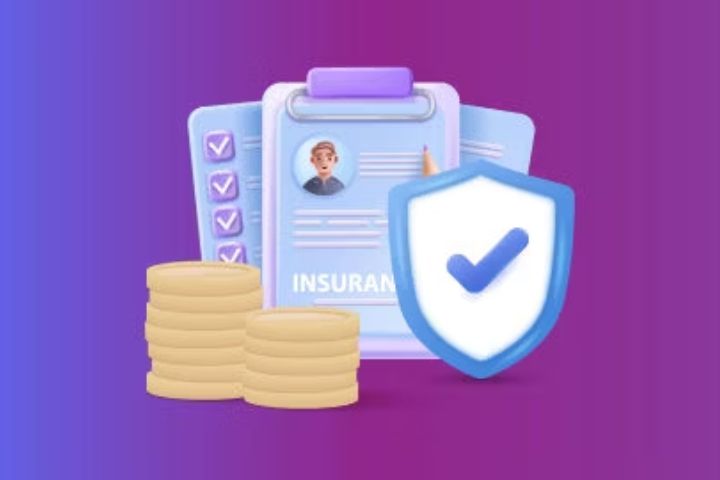Emergency Funding Without Breaking an FD: Loan Against an Insurance Policy Explained

Emergencies don’t come with a warning. Whether it’s a sudden medical expense, an urgent business need, or a personal financial gap, you may need quick access to funds. In such situations, liquidating long-term investments or breaking a Fixed Deposit (FD) might not be the most efficient solution. Instead, a Loan Against Insurance Policy (LAS) offers an effective alternative — one that allows you to unlock liquidity without disrupting your savings or incurring premature withdrawal penalties.
This facility is increasingly being offered by leading banks like ICICI Bank, helping customers meet immediate financial needs by leveraging their life insurance policies.
Here’s everything you need to know about how it works, its benefits, and how to use it wisely.
What is a Loan Against Insurance Policy?
A loan against insurance policy is a form of secured credit, where an individual pledges their life insurance policy as collateral to avail of an overdraft facility from a bank. The loan amount is based on the surrender value of the insurance policy.
The LAS facility offers a revolving credit line, where you are sanctioned a limit and are free to use any portion of it, as and when required. Interest is charged only on the amount utilised and for the duration it is utilised, making it a more flexible and cost-effective solution compared to traditional loans.
How Much Can You Borrow?
The loan amount under LAS typically starts from a minimum of ₹50,000, while the maximum amount is determined by the Bank’s Credit Approval Authority. The exact sanction is based on factors such as:
- Type of insurance policy
- Surrender value
- Credit profile
- Tenure and repayment history
Before applying, it’s advisable to check your policy’s eligibility and surrender value with your insurance provider or banking partner.
Key Benefits of LAS
1. Instant Liquidity Without Liquidation
You don’t need to break your FDs or redeem your mutual funds. Your long-term investments continue to grow while your insurance policy becomes a means to access short-term funds.
2. Overdraft Flexibility
Unlike fixed-term loans, LAS functions as an overdraft facility. You can draw funds as needed, repay, and redraw within the sanctioned limit, offering higher flexibility for fluctuating needs.
3. Interest Only on Utilised Amount
You are charged interest only on the amount you actually use, and only for the period it is utilised, not on the full sanctioned limit. This makes LAS far more cost-efficient than traditional personal loans.
4. No Pre-Payment Charges
LAS facilities typically come with no foreclosure or pre-payment penalties, allowing you to repay early without incurring additional charges.
5. Preserves Insurance Cover
The policy’s life cover remains active as long as premiums are paid regularly. In the event of the policyholder’s demise, the outstanding loan is adjusted against the policy payout, and the balance goes to the nominee.
Eligible Insurance Policies
Not all policies are eligible for LAS. Most banks accept traditional life insurance policies with a guaranteed surrender value. These include:
- Endowment plans
- Whole life policies
- Money-back policies
Term plans and Unit Linked Insurance Plans (ULIPs) are typically not accepted as collateral, as they either have no surrender value or carry high market-linked volatility.
Application and Disbursal Process
The process to avail LAS is simple and streamlined:
- Policy Submission
Submit your original insurance policy and latest premium receipts along with your KYC documents. - Surrender Value Assessment
The bank verifies the policy and assesses its surrender value, based on which the loan amount is determined. - Lien Marking
The bank places a lien on the policy, and the insurance company is notified. - Limit Sanction and Overdraft Setup
An overdraft account is opened with a sanctioned credit limit. You can now withdraw funds as needed. - Utilisation and Repayment
You can use the facility anytime. Repayment is flexible, with interest charged only on the utilised amount for the period of usage.
Real-Life Use Cases
Many individuals opt for LAS when:
- Facing medical emergencies
- Need short-term funds for business expansion
- Managing education or travel expenses
- Looking to consolidate high-interest debts
- Require bridge financing without disturbing existing investments
Digital LAS: Convenience at Your Fingertips
Today, leading banks like ICICI Bank offer a fully digital journey for LAS, enabling customers to:
- Check eligibility online
- Upload policy and KYC documents
- Get quick approvals
- Set up an overdraft account seamlessly
Online interfaces also allow for tracking utilisation, checking interest due, and making repayments from the comfort of your home.
Conclusion
A loan against insurance policy offers a smart and efficient way to access liquidity during emergencies, without jeopardising your long-term financial planning. Its flexibility, cost-efficiency, and low documentation make it ideal for short-term needs, especially when compared to unsecured personal loans.
With banks offering digital onboarding, real-time disbursal, and attractive overdraft options, LAS is fast becoming a preferred option for those seeking emergency funds with minimal disruption.
If you hold a traditional life insurance policy, now is the time to explore how it can serve as a financial cushion in times of need, all while continuing to protect your loved ones.
Also Read: Key Benefits of Renewing Your Online Car Insurance on Time


